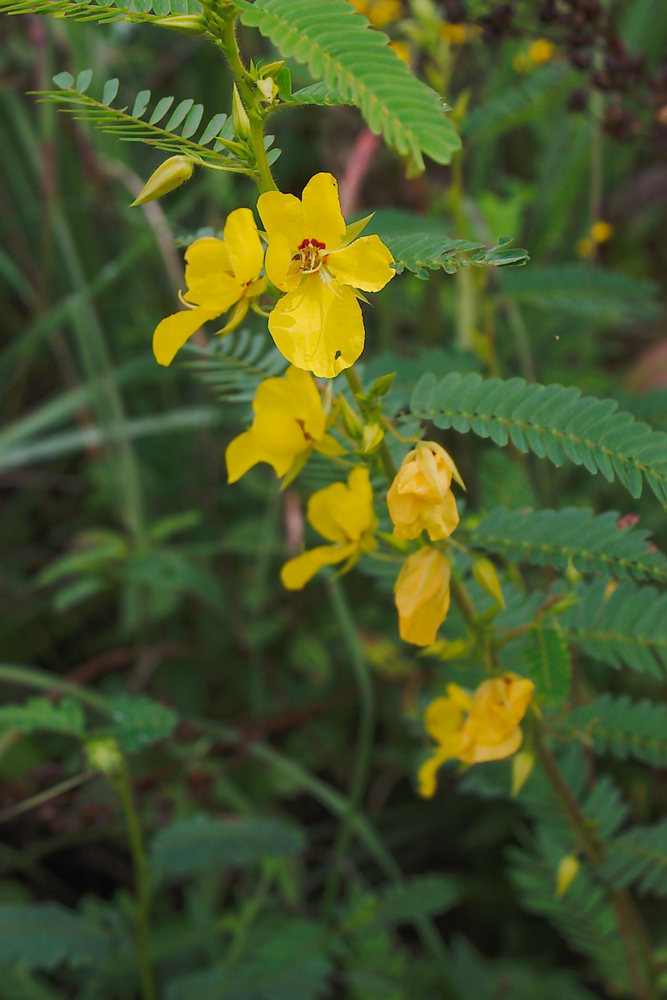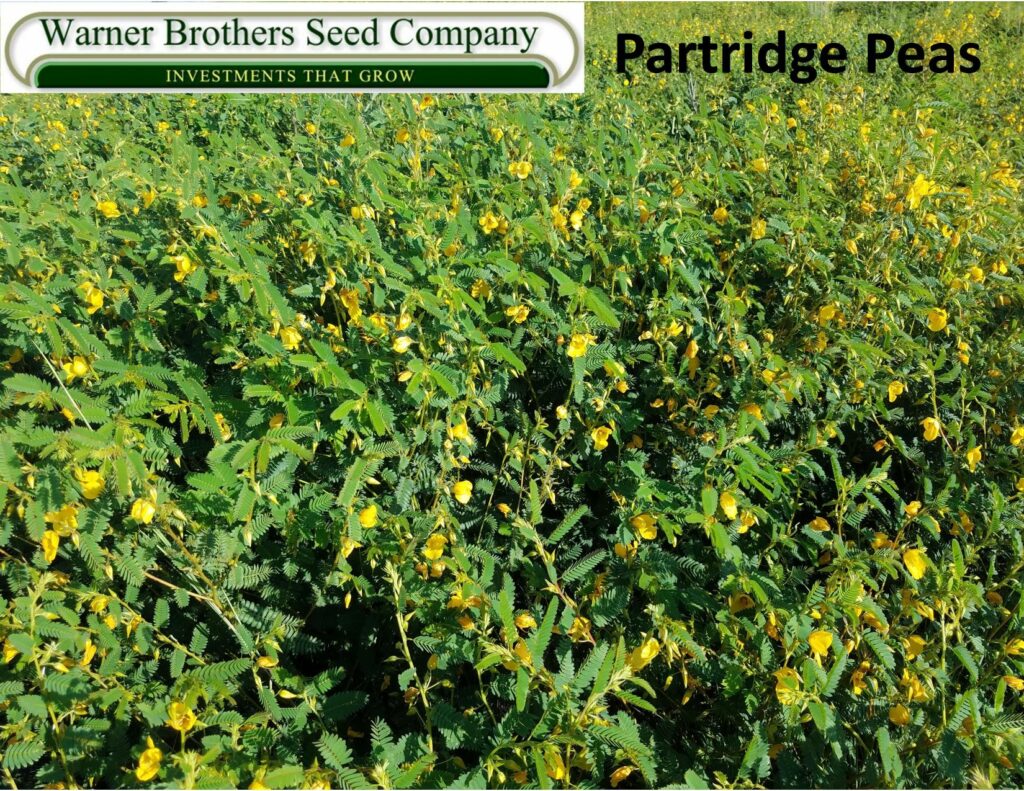Partridge Peas
(Cassia Fasciculata)
Comanche partridge pea is a warm-season annual, reseeding, native legume. Plants can either have an erect or prostrate type growth with several spreading branches. During the growing season, plants are covered with yellow pea-type flowers. Seed pods are flattened and dark brown and contain between 10-20 seeds per pod.
Comanche partridge peas are adapted throughout the Great Plains and the Eastern United States. It performs best in areas receiving 19 inches or more annual rainfall. Comanche partridge pea grows best on sandy loam soils and soils of low fertility.
Partridge peas provide good cover and food source for wildlife, especially game birds. It is not readily consumed by livestock, which makes it suited for erosion control.
The species is best utilized when blended in seed mixtures with native grasses, forbs, and legumes. It is utilized primarily for land restoration and erosion control, wildlife plantings and beautification.
Seedings should be made on a well-prepared, firm weed-free seedbed. Seeding rates of 1-3 pure live seed pounds per acre, when blended with native forbs and grasses, is adequate, Comanche partridge peas will reseed annually with minimum soil disturbance.


General Characteristics
| Plant Type: | Legume |
| Life Span: | Annual |
| Growing Season: | Warm Season |
| Native/Introduced: | Native |
| Plant Height: | 2-3 feet |
| Cold Tolerance: | Good |
| Drought Tolerance: | Good |
| Salt Tolerance: | Fair |
| Soil Type: | Sand - Loam |
| Minimum Rainfall: | 19 inches |
| Planting Rate: | 4-8 pls# |
| Planting Date: | Feb. - June |
| Seed Type: | Smooth |
| Uses: | Wildlife Habitat, Erosion Control, Reclamation |
